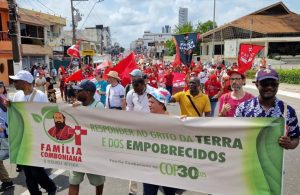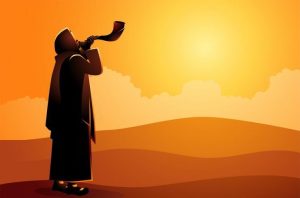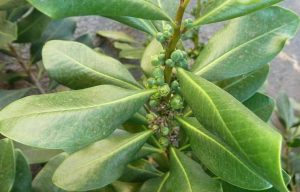In the Nahuatl language, spoken in the central region of Mexico, Machincuepa means somersaults or ‘pirouette’. For hundreds of adolescents and young people in the outskirts of Mexico City, Machincuepa also means relaxation and recreation, but, at the same time, a school of life in circus artistry that transforms their lives.
A majestic tent for the Cirque du Soleil was set up in the wealthy part of Mexico City. A few kilometres away, in the Las Águilas quarter, among the houses built into the hills, another sort of circus born from the Cirque du Soleil is transforming the lives of the poorest and most in need young people in the outskirts of the Mexican capital.
Cirque du Soleil is the largest circus company in the world. It started in Canada in 1984. With more than 4,000 employees of whom 1,300 are artistes from various countries, it tours the world bringing wonder, excitement and enthusiasm to the public with the magic of its colours, music, acrobatics and stories. The shows are characterised by extraordinary ability and beauty.
The same aim of awakening the senses and exciting the emotions of the public inspired the Cirque du Soleil, together with the Canadian NGO Jeunesse du Monde, to create a social project aimed at helping children, adolescents and young people in vulnerable situations. These varied from those living in criminal and impoverished environments, those suffering from abuse, people addicted to dangerous substances and many more. Consequently, in 1995, the Cirque du Monde (Circus of the World) emerged as a form of intervention that employs circus artistry as an alternative pedagogy for young people living in precarious conditions who need extra support and something to invest their energy into. This programme, called Circus Social, rapidly spread to the five continents and has centres in 16 countries and 46 cities, one of which is Machincuepa Circo Social A.C, in the Mexican capital.
“The circus is a metaphor that helps us to understand life. There are risks, challenges, surprises, fears, desires, satisfaction and apprenticeship,” writes Juan Carlos Hernández Vázquez, who founded Machincuepa in 1999. “The circus has a lot to offer young people. Besides being an enjoyable activity, it gives them the opportunity to take the risk and channel their adrenalin in a safe context.”
Machincuepa is not just an academy for training circus artistes, but it’s a school of life based upon a balance between two disciplines: circus artistry and social sciences. The execution of the first is enriched by the second. And it is taught by practice. In short, a social circus may be defined as a grouping of formative activities that communicate circus values to its pupils.
One way of teaching the value of teamwork is, for example, forming a human pyramid. The importance of the group, solidarity and the weighing of risks is learned when one is responsible for holding up your teammates and ensuring you all avoid injury. Self-esteem increases when a someone learns a skill they never dreamed they’d achieve, such as balancing on a wheel or juggling balls.
When learning to walk on stilts, learners are at first fearful, but then they have the opportunity to see life from a different perspective. The trainers help them to walk while working on their fear, helping the young people to exercise the instruments of prudence in daily life such as foreseeing danger, a correct balance, the ability to give and to receive advice.
Falling and getting back up again, as well as receiving constructive criticism gives students the tools to deal with everyday life. The aim is for every boy and girl to become aware that through hard work and valiant efforts, there will be positive results.
The making of costumes and materials used for the show, such as doing make-up, are part of the pedagogical process. They are a means by which the young people articulate what they have learned; it reinforces their self-confidence and creativity and enables them to add their own touch to the legacy they have become a part of. Machincuepa Circo Social unites the five principles of the circus: cooperation, security, joy, perseverance, and discipline.
Those who make up the circus see themselves as part of a larger family in which each member has his own work to do but where leadership is shared across everyone. Juan Carlos Hernández Vázquez points out: “We have children who come to us shy, uncertain and afraid of taking part in any activity whatever. In the course of their training we see impressive changes, both in the way they express their emotions and in their physical attitudes as well as the way they start to understand more, are more courageous and learn faster. We have courses to help the children overcome the marginalisation, exclusion and violence that characterised the lives of many of them.”
Just seeing their pride and satisfaction when they take part in a show in front of the public is one of the great joys of the organisers. Organisers divide induction into the circus into four phases. The first is the welcoming. Students are fascinated by the magic of the circus and by the desire to get involved in a particular act that they’ve been inspired by. During this process, they acquire a sense of belonging to the group.
The second phase consists of their becoming integrated into the group and being presented with the principles of the circus. In the third phase, the students learn how to regard their community: family, parents and neighbours. The fundamental values of family and social life are explained: friendship, respect, loyalty, cooperation, teamwork, creativity, responsibility etc.
The fourth and final phase is the one that defines the life project. The apprentices learn how to recognise the abilities they have acquired to become builders of their own future. They learn how to juggle, perform acrobatics, how to walk the tight rope, how to be responsible on the trapeze … these exercises are ways of facing up to life and navigating through difficult environments.
(Fernando Felix)






